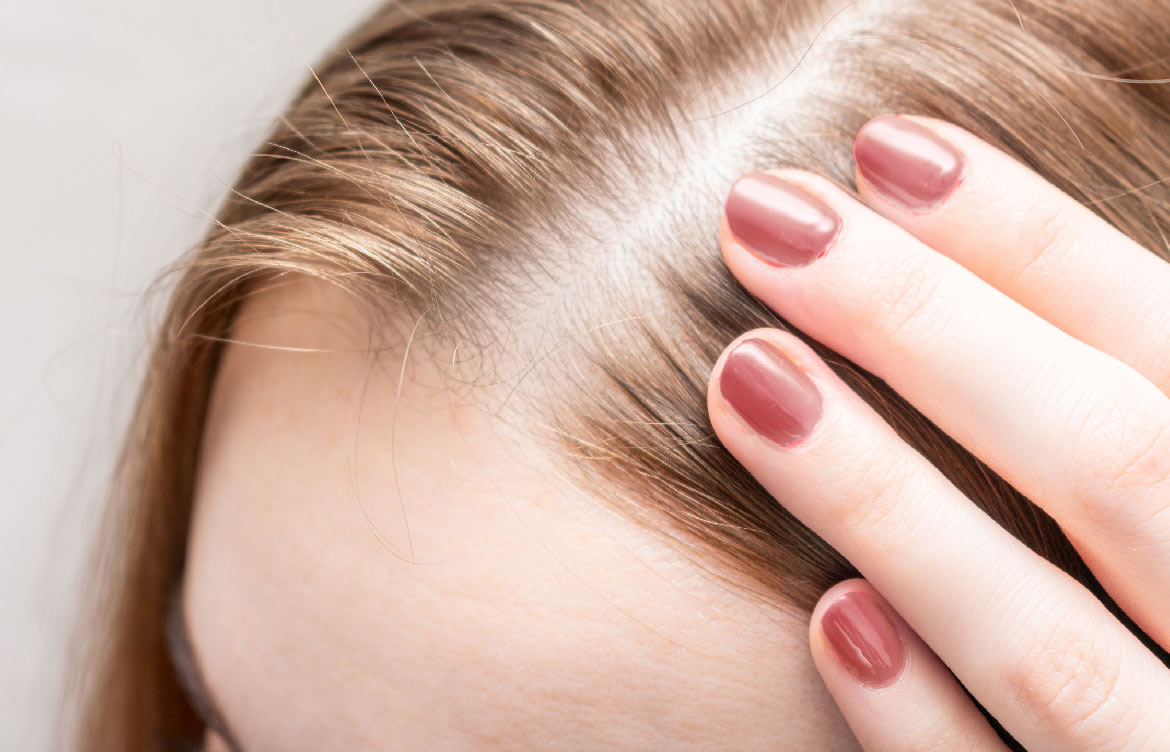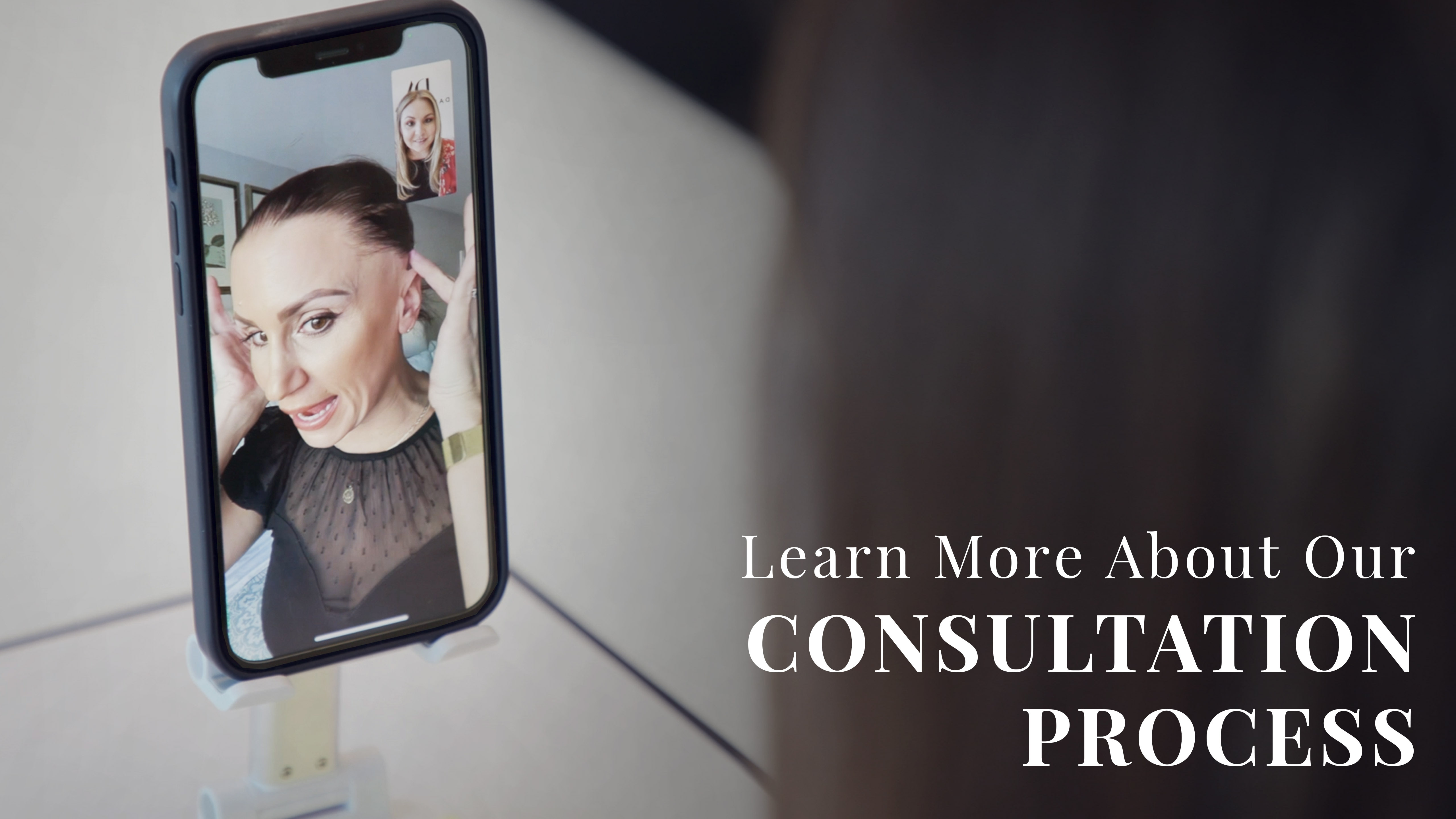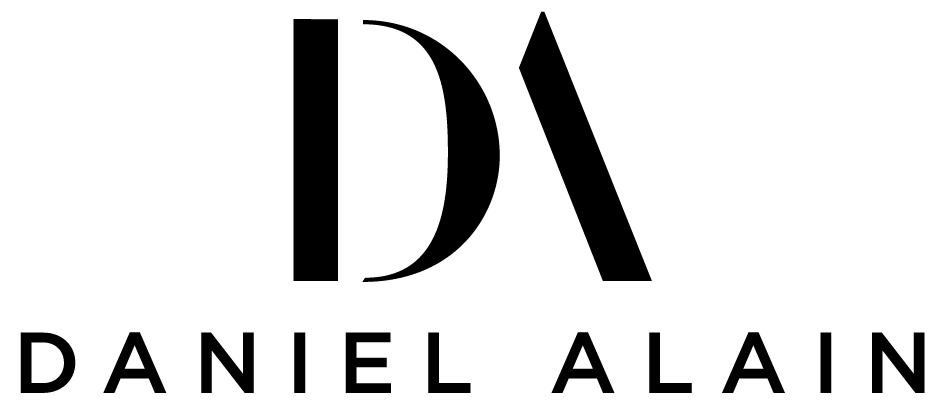The Best Alopecia Treatments that Actually Work

Hairlines that grow further and further from your forehead, bald patches that appear overnight, thinning strands that come out in clumps—alopecia manifests in many ways. The condition, which causes hair loss on the scalp and elsewhere on the body, affects millions of men and women around the world. Everyone struggling is looking for a solution, but costly prescriptions and less-than-stellar results can make finding the best alopecia treatment feel like an uphill battle.
While genetic hair loss may seem like one big bummer with no end in sight, there are treatments for alopecia that can help stop loss and, in some cases, even promote regrowth. In this post, we’ll answer the question "what is the best treatment for alopecia hair loss," and explore some of the most effective solutions available today.
HOW TO TREAT ALOPECIA HAIR LOSS

Many alopecia treatment companies will tote themselves as the one and only solution for genetic hair loss. But claims like that are far-fetched at best—and flat-out lies at worst.
Here’s the thing: alopecia is a complex condition with a variety of underlying causes. As a result, there’s no one-size-fits-all alopecia treatment that will work for everyone. The most effective alopecia treatments are those that are tailored to your individual needs. So before you start experimenting with the latest and greatest in hair loss solutions, you need to understand what’s causing your alopecia in the first place.
Your body's physiology also plays a role in how your body will respond to certain treatments. Factors like age, stress levels, overall health, and even your DNA can all affect the level of success you'll experience.
That said, some alopecia treatments have proven to be effective for a wide range of people. Let's take a look at some of the most promising alopecia treatments available today.
Minoxidil
You might not recognize the name, but you’ve probably seen it in action. Minoxidil is the active ingredient in Rogaine®, the over-the-counter hair loss treatment that’s been around for decades.
While it's arguably the most effective FDA-approved over-the-counter topical treatment for alopecia, it doesn't work for everyone. Research determines that you need a specific kind of enzyme activity to convert Minoxidil to its active form. If you don't have this activity, Minoxidil won't work for you—which is why many people take our Minoxidil Response Test before trying it.
Finasteride
The only other FDA-approved alopecia treatment to exist is Finasteride, which is more commonly known by its brand name Propecia. This oral medication works by inhibiting the activity of an enzyme that’s responsible for converting testosterone to DHT (a hormone that’s linked to hair loss).
While it's a super-effective treatment for men, many doctors won't prescribe it to women because it can cause birth defects. However, if you don't want children or you're out of childbearing years, it's definitely worth discussing with your doctor.
INTACT Anti-Hair Shedding Treatment
Patience is an absolute must when you're waiting for most alopecia treatments to work—but that doesn't make it any less devastating to see your hair fall out day after day. INTACT is a pre-shampoo scalp treatment that will keep your hair on your head and strengthen each strand to prevent future breakage.
It won't restore your hair to its former glory, but INTACT will help you hang on to the hair you have and prevent alopecia from progressing.
Laser Therapy
No, you're not in a sci-fi movie—laser therapy is an alopecia treatment that's backed by actual science. This non-invasive procedure uses low-level lasers to stimulate hair growth.
While results are not a guarantee, some studies have shown that it can be effective for treating alopecia areata. If you're interested in trying laser therapy, we suggest doing your research and finding a reputable provider in your area.
Platelet-rich Plasma (PRP) Therapy
A little less sci-fi and a little more horror movie, PRP therapy is an alopecia treatment that involves taking a sample of your blood (ew) and spinning it in a centrifuge to separate out the platelets. These platelets are then injected into your scalp to stimulate hair growth.
PRP therapy is fairly new to the game, but studies show promising results for male pattern hair loss.
Corticosteroid Injections
You might not want needles anywhere near your head, but corticosteroid injections are a super-effective route for jump-starting hair growth—especially if your hair loss is caused by an autoimmune condition like alopecia areata.
Corticosteroids are anti-inflammatory drugs that can help to suppress the immune system and allow your hair to regrow and thrive. However, they're not a long-term solution, and you'll need to keep getting injections to maintain the results.
Hair Transplant
No one wants to go under the knife, but when all else fails, a hair transplant can offer a permanent head of hair. Essentially, this procedure involves taking hair from one part of your head (usually the back) and transplanting it to the balding area where it will take root and grow.
Hair transplants are a big investment—both in terms of money and time—but they do work. Just make sure you do your research and find a reputable surgeon with experience before you dive in.
WHY INTACT IS A GUARANTEED & IMMEDIATE TREATMENT TO RETAIN YOUR HAIR

Hair growth doesn't happen overnight. You won't see results for at least three months, no matter what alopecia treatment you use. And even then, you might not see the full effects for up to a year.
INTACT is the only treatment for alopecia hair loss that works instantly. Pairing it with another alopecia treatment will help you see the best results, but even if you use it on its own, you'll notice a huge difference in hair shedding right away.
Delivers the Impressive Results in Just One Use
If you're tired of watching your hair wash down the drain, apply INTACT. Our proven formula will go to work strengthening the muscles around your follicles, gripping each strand in place, so it doesn't fall out during high-shed activities like brushing, washing, and styling. You'll notice fewer strands circling your tub in just one use.
Works in 30 Minutes
We know your time is valuable, so we made INTACT quick and easy to use. Just apply it to your scalp before shampooing, wait 30 minutes for it to do its magic, then rinse it out and proceed with your normal hair care routine. Treating hair loss has never been so easy.
Clinically Proven
We're not just blowing smoke. INTACT is clinically proven to reduce hair shedding by up to 77% in just one use. So, you can rest assured that it's working hard to keep your hair where it belongs—on your head.
Nourishes & Hydrates the Scalp
Your tresses won't just look better with INTACT, they'll feel better too. Our alopecia treatment is packed with powerful, plant-based ingredients like GMO-free corn sugar, panthenol (B5), and coconut fatty acids that nourish and hydrate the scalp to encourage healthy hair growth.
Volumizes Hair
A side benefit of strengthening the microscopic muscles around your follicles? Volume, baby. INTACT lifts each strand from the root to give your mane a full, thick appearance. So, if your alopecia has left you feeling flat, INTACT will help you get your groove back.
Contains Ingredients You Can Trust
No shady chemicals here. INTACT is safe for all hair types (even those who color their strands) and free of sulfates, parabens, silicones, oils, SD-alcohol, artificial dyes and gluten. It's also vegan.
OTHER TIPS TO HELP TREAT ALOPECIA
Sometimes the best way to treat hair loss is just to throw everything at it. Incorporating a variety of alopecia treatments, both chemical and natural, can give you the best chance of success. So, in addition to INTACT, you should also implement some of the following tips into your alopecia treatment plan.
Take the Right Vitamins & Supplements
Not getting enough nutrients on your plate could be contributing to your hair loss. Get a blood test to see if you're deficient in any vitamins or minerals, then take supplements to correct the issue. Deficiencies that can cause hair loss include biotin, folate, and vitamin B12.
Avoid Tight Hairstyles
Tight hairstyles (think: ponytails, cornrows, and braids) can put too much tension on your hair follicles and cause them to fall out. Take a break from any hairstyles that pull on your strands too tightly and give your scalp a chance to recover. If you must wear your hair up, opt for loose styles like messy buns and low ponytails.
Eliminate Heat Treatments
High temperatures on your tresses can make a bad situation worse. If you're trying to treat alopecia hair loss, preventive measures like laying off the heated styling tools will give your strands a chance to cool down. And on the occasions that you absolutely have to curl or straighten your hair, be sure to use a heat protectant and keep the temperature on low.
Eat a Balanced Diet
Want to know how to treat alopecia? Focus on taking care of yourself. Losing your hair is a sign that your body is out of balance. Eating a healthy diet that's rich in protein, essential fatty acids, and vitamins can help to correct the issue and promote healthy hair growth.
Try a Scalp Massage
It's true—a massage a day can keep the alopecia away. Scalp massages stimulate blood flow to the hair follicles, delivering the nutrients they need to grow. Just a few minutes of at-home massage each day can make a big difference in the health of your strands.
Get Enough Sleep
Hair care is self-care. When you're well-rested, your body is better able to function properly and fight off infection. Getting enough sleep can help to reduce stress levels, improve circulation, and give your body all the tools it needs to regrow what you've lost.
Reduce Stress Levels
We know, we know—stress is part of life. But if you're already dealing with alopecia, it's important to find ways to reduce your stress levels as much as possible. Stress can impact hair growth by causing inflammation, disrupting the natural hair cycle, and triggering hormonal imbalances. If you're not sure how to de-stress, consider trying yoga, meditation, or aromatherapy.
DISCOVER THE RIGHT TREATMENT FOR GENETIC HAIR LOSS AT DANIEL ALAIN
So—what is the best treatment for alopecia? Unfortunately, the answer doesn't fit nicely in a single box. There are a lot of variables at play, and too many companies out there promising inches of growth overnight with just one magical solution. The reality is that alopecia is complex, and taking extra precautions (like testing for enzyme activity with our Minoxidil Response Test) is important to make sure you're getting the most out of your treatment.
At Daniel Alain, we focus on providing our clients with solutions that are backed by science and proven to work. Whether you're just starting to experience hair loss or you've been dealing with alopecia for years, INTACT can help. Our unique blend of ingredients is specially formulated to retain hair and improve the overall health of your scalp. Whatever alopecia treatment you're using, INTACT can put a halt to hair loss while you're waiting for your new strands to grow.
So don't give up—there are plenty of effective alopecia treatments out there. With the right approach, you can get your hair loss under control and start seeing results. Grab a bottle of INTACT and get started on your journey to healthier, fuller hair today.
book a free consultation
Our stylists will help you find the right hair loss solution just for you

Frequently Asked Questions
What is Alopecia?
Alopecia is the medical term for hair loss. It can be caused by a variety of factors, including genetics, autoimmune disease, stress, and nutritional deficiencies.
What are the Different Types of Alopecia?
There are three main types of alopecia: alopecia areata, alopecia totalis, and alopecia universalis.
Alopecia areata is the most common, and it's characterized by patchy hair loss on the scalp, face, or body. Alopecia totalis is a more severe form of alopecia areata, characterized by the complete loss of hair on the scalp. Alopecia universalis is even more severe and is characterized by the complete loss of hair on the scalp, face, and body.
What Causes Alopecia?
There’s no definitive answer to this question. Alopecia can be caused by a variety of factors, including genetics, autoimmune disease, stress, and nutritional deficiencies.
What are the Symptoms of Alopecia?
Patchy hair loss, thinning strands, and receding hairlines are all common symptoms of alopecia.
Can Alopecia Be Cured?
There is no cure for alopecia, but there are treatments that will help you stop hair loss and even regrow the strands you've lost.
Does Minoxidil Work for Everyone?
No—Minoxidil is not effective for everyone. In fact, it only works for people who have a specific kind of enzyme activity. The best way to find out if Minoxidil will work for you is to take Daniel Alain's Minoxidil Response Test.
How Can I Get Tested to See if Minoxidil Will Work?
The best way to find out if Minoxidil will work for you is to take Daniel Alain's Minoxidil Response Test. It's the only test of its kind that can determine if you have the enzyme activity present that makes Minoxidil effective.
What is the Fastest Way to Cure Alopecia?
Every alopecia treatment takes at least three months to start working. So patience is key! In the meantime, INTACT can help you keep the hair you have and improve the overall health of your scalp.
Can Hair Grow Back From Alopecia?
Yes—with the right treatment, alopecia hair loss is reversible. It can take several months for new hair to start growing, but with patience and perseverance, you can get your hair back.
Do Alopecia Treatments Work the Same for Men & Women?
No—alopecia treatments can work differently for men and women. That's why it's important to consult with your doctor before starting any treatment.
What Foods Help Alopecia?
Eating a diet rich with hair-healthy nutrients like biotin, iron, and zinc can give your body the building blocks it needs to support healthy hair growth.
Is Alopecia a Sign of Cancer?
No—alopecia is not a sign of cancer. However, it can be a side effect of some cancer treatments, like chemotherapy.
Is Alopecia a Serious Condition?
No—alopecia is not a serious condition. However, it can be emotionally difficult to deal with hair loss. If you're struggling to cope, don't hesitate to seek out counseling or therapy in addition to alopecia treatments.
Can Alopecia Get Worse Over Time?
Yes—age, stress, and other factors can cause alopecia to progress from mild to severe. You can also experience multiple episodes of alopecia over your lifetime.
How Fast Does Alopecia Spread?
How quickly alopecia spreads varies from person to person. In some cases, it can progress quickly, while in others, it can take years for alopecia to progress. As soon as you notice hair loss, consult with your doctor about treatments.
Is There a Way to Naturally Treat Alopecia?
Natural treatments like scalp massages and improving diet have shown to be effective for alopecia treatment. However, it really depends on what's causing your hair loss. If you're unsure, consult with a medical professional.
How Do I Know if My Alopecia is Genetic?
Some tests can be done to determine if your alopecia is genetic. But if your father or mother has signs of alopecia, there's a good chance that they passed the condition on to you.
What are Some Alternative Treatments for Alopecia?
Scalp massage, low-level laser therapy, and plasma injections are all alternative treatments for alopecia. Studies have shown that they may be effective, but more research is needed.
Is There a Way to Immediately Stop Alopecia?
INTACT is the only product that can stop alopecia in its tracks. It's a pre-shampoo treatment that strengthens your follicles and grips them into place to reduce shedding.
Does INTACT Really Work For Hair Loss?
Yes—INTACT has been clinically proven to reduce hair shedding by up to 77%. It won't regrow your hair, but it will keep the hair you have on your head.
Is INTACT Safe to Use on My Hair?
Yes—INTACT is completely safe to use on your hair. It's made with natural ingredients and is suitable for all hair types.
How Do I Properly Apply INTACT?
Just apply INTACT to your dry scalp before you shampoo. Let it sit for 30 minutes, then shampoo and condition as usual. You can use it every time you wash your hair—there's no need to worry about overuse.
Should I Use INTACT Every Day?
You should use INTACT as much as you wash your hair. The more you use it, the better your results will be.
Can INTACT Regrow My Hair?
No—INTACT can't regrow your hair. However, it can prevent further hair loss and help you keep the hair you have.




